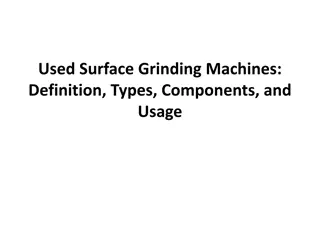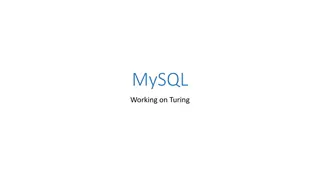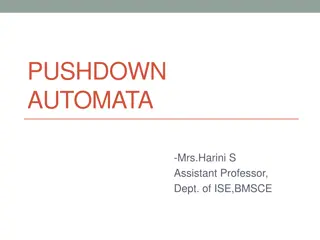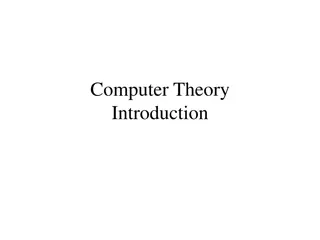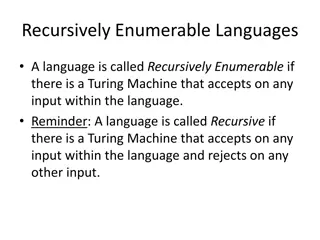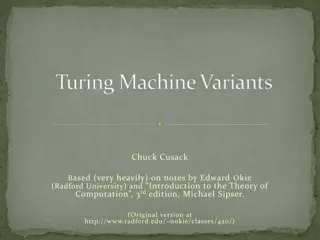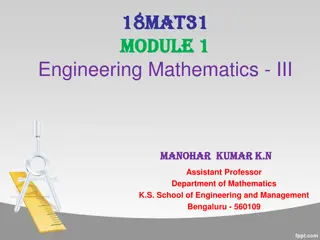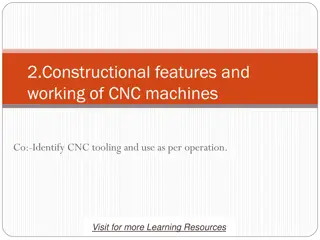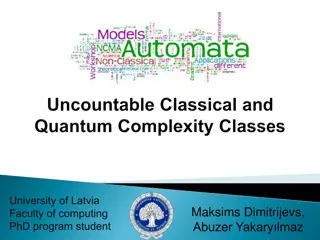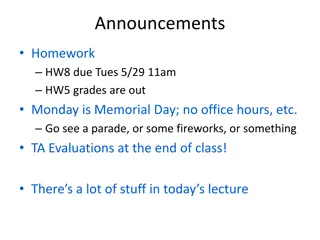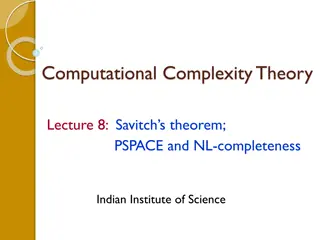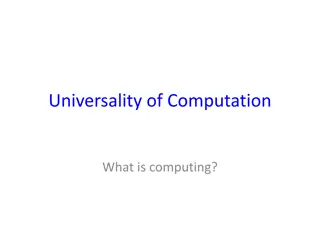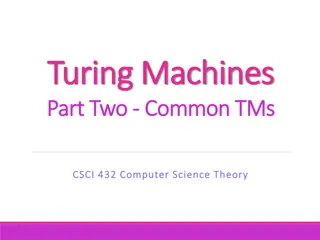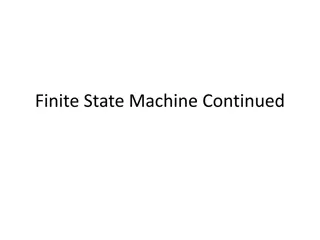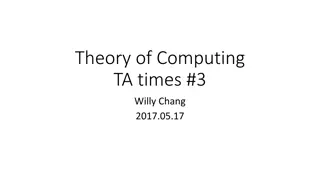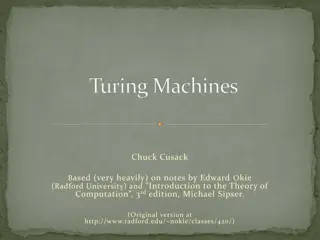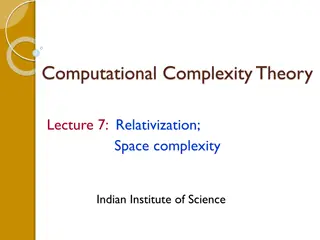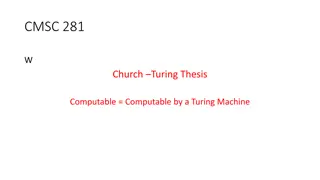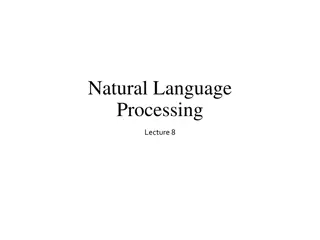Understanding Deterministic Turing Machines
Detailed explanation of Deterministic Turing Machines, their constituents, formal definition, determinism, and special statuses such as Start, Accept, Reject, and Loop. Includes visual representations and key concepts of deterministic Turing machines.
Download Presentation

Please find below an Image/Link to download the presentation.
The content on the website is provided AS IS for your information and personal use only. It may not be sold, licensed, or shared on other websites without obtaining consent from the author. Download presentation by click this link. If you encounter any issues during the download, it is possible that the publisher has removed the file from their server.
E N D
Presentation Transcript
Constituents Infinite tape Head Transition diagram q1 q0 qf Unique accept state. Also no arrows are coming out.
Formal definition A Deterministic Turing Machine (DTM) is a sextuple (Q, , , , q0, qf) where: Q is a finite set of states is the input alphabet is the tape alphabet, There is a special blank symbol in q0is the start state qfis the final state : Q x Q x x {L,R,S}, where L stands for Left, R stands for Right and S stands for Stay.
Formal definition (cont.) (q , a) = (q , b, L) means: if you are in state q and the head in the tape points to symbol a then move to state q , replace symbol a with symbol b in the tape and move the head one position to the left Illustration: a b head head q q q q
Determinism Determinism means that I have no choices! The transition function sends pair (q, a) to at most one triple (q , b, x) (in other words there is at most one arrow from state q reading symbol a maybe there are no such arrows). No -moves are allowed (I must read something in the tape in order to change state).
Machines special status Start: Be at initial state , the tape contains only the input and the head points to the first (leftmost symbol of the input) Accept: Reach the accept state. The machine stops the computation and accepts (notice that part of the input might be unread). Reject: Be in a state q (other than the accept state), read symbol a and find no outgoing arrows under symbol a. Loop for ever: Enter a subset of states which repeat for ever (different than the reject case )
Machines special status Start: a b a a b head q1 q0
Machines special status Accept: b b a a b head qf
Machines special status Reject: b b a a b head q q
Machines special status Loop: b b a a b head q
Recursive Languages A language is recursive (or decidable, or computable) if there is a Turing Machine which: Accepts for every string in the language Rejects for every string not in the language
Example Find a DTM that computes the language L = {anbn: n 0}. High level program: Repeat Erase an a. Pass along the rest of as. Erase a b Pass along the rest of bs. Go to the beginning of the input. Until either the whole input is erased (accept) or you find unmatched as or bs (reject).
Example Find a DTM that computes the language L = {anbn: n 0}. Answer: a a , R x x , R x x , R b b , R a x , R b x , R q0 q1 q2 , L qf q3 a a , L b b , L x x , L
Testing Test the machine for several possible inputs to see if it works as it should. Test inputs: (it should accept) aaabbb (it should accept) aaabb (it should reject) aabbb (it should reject) aabba (it should reject) (See file dtm_example.pptx).


